Croatia: Latest Gold And Silver Collector Coins Features Ground-breaking Fishing Apparatus
The Croatian National Bank issue new gold and silver collector coins as part of the Croatian Inventors series of collector coins.
The series highlights promoting prominent historical, scientific and economic contributions of Croatians around the world. The latest coin in the series focuses on Mario Puratić (1904 – 1993) remembered as the father of the fishing industry, inventor of the Puratic Power Block and a Croatian who has done more than any other man to change the face of the fishing industry. His innovation revolutionised the world of fishing and enabled faster and more efficient hauling of fishing nets, reducing the physical effort of fishermen and increasing fishing productivity.
Born into a family of farmers and fishermen on the port village of Sumartin on the island of Brač in June 1904, he like many of his countrymen, left his home in 1925 to seek his fortune in the United States, where he found work as a fisherman on large tuna purse seiners – a technique involving a large net deployed around a school of fish. The net has floats along the top and a lead line threaded through rings along the bottom. When the line is pulled, the rings close together, trapping the fish. The work is labourious and requires dozens of men to pull the nets onto the boat. For as long as men had taken to trawlers in the pursuit of large hauls of fish, fishermen and later deck equipment manufacturers looked for various ingenious innovations aimed at reducing manpower on board and facilitating the working procedure during fishing operations. One such innovation was the Puratić power block. Since its inception and introduction in the late 1950’s, no single invention has contributed more to the success of purse seine net hauling.
It was in 1954 that he came up with the idea of form of a pulley with a central rotating element wrapped in hard rubber driven by an endless rope from the warping head of a winch. When the mechanism was combined with fluid hydraulic power technology, it changed the whole character of purse seine fishing. Such power blocks requiring manual operation seem to be now used rarely, if at all with most power blocks being driven by hydraulic pumps driven from the main or auxiliary engine. The addition of new large synthetic nets would go on to revolutionise the fishing industry. Puratić received a patent for his invention on the 7th Feb 1956 and it was the Marco Seattle Company who went on to develop Puratic's idea, where it would soon set the standard of commercial fishing in the whole world. Another phase of fishing history had begun but it was especially fulfilling to Puratić when the apparatus was implemented for Croatian fishing in 1963.
Puratić was given the National Inventor of the Year Award by the American Association for the Advancement of Invention and Innovation in 1975 when he was also elected among the one hundred greatest inventors in the United States of the 20th century. During his lifetime, Puratić was an honorary citizen of many countries, as far away as Iceland. Mario Puratić died in Santa Barbara, California in January 1993 at the age of 91. His remains were brought from the United States to his native town of Sumartin in 1994. A carved stone tablet placed at the birth home of Mario Puratić reads –
“Perfection of simplicity built into the winch has halved the torments of fishermen”
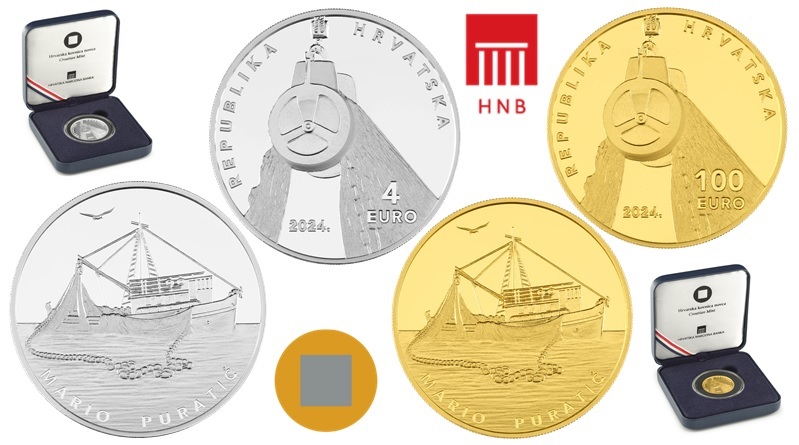
The gold and silver coins share the same design and are produced by the Croatian Mint at their facilities in Sveta Nedelja on behalf of the Croatian National Bank and designed by sculptor Jelena Mavrić Varga. The obverse side depicts a fishing trawler equipped with Puratić's mechanical pulley. The vessel is shown in the process of pulling the fishing net out of the sea. Gentle sea waves blend into the field with a bird in flight above the trawler. Below the primary design along the rim is the incused text MARIO PURATIC. The reverse side features an enlarged model of Puratić's mechanical pulley with a grooved wheel covered with rubber. The pulley is shown as one end of the net is pulled over it as the driven grooved wheel rotates and pulls the net onto the deck. Along the rim and above the primary design is the inscription REPUBLIKA HRVATSKA (Republic of Croatia). Superimposed over the bunched fishing net is the denomination 100 EURO (gold) or 4 EURO (silver) shown incused. The year 2024 is placed just to the left of the denomination.
| Denomination | Metal | Weight | Diameter | Quality | Mintage Limit |
| 4 Euro | 999.9 Silver | 31.1 g. | 38.6 mm. | Select Bullion | 1,000 |
| 100 Euro | 999.9 Gold | 31.1 g. | 32 mm. | Select Bullion | 100 |
Available from the 26th September, both the gold and silver coins are encapsulated and presented in a custom case accompanied with a certificate of authenticity. For additional information, please visit the online webshop of the Croatian Mint.

Download the Greysheet app for access to pricing, news, events and your subscriptions.
Subscribe Now.
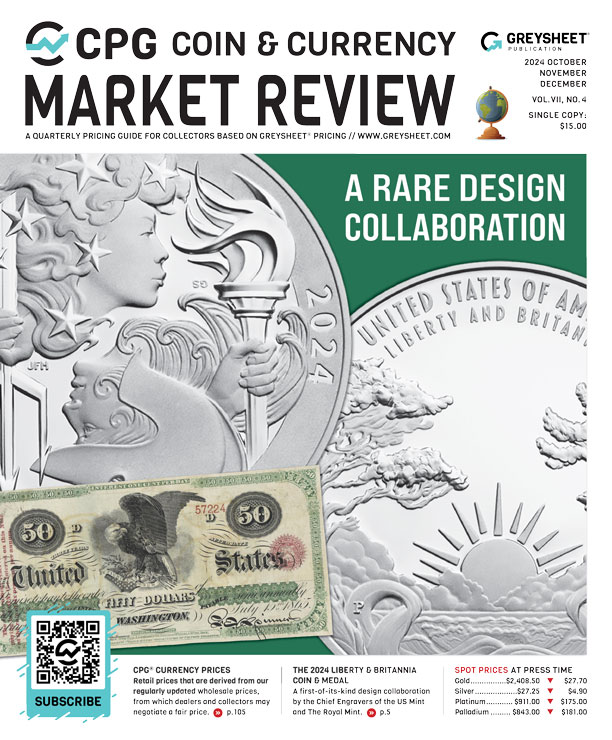
Subscribe to CPG® Coin & Currency Market Review for the industry's most respected pricing and to read more articles just like this.
Author: Michael Alexander


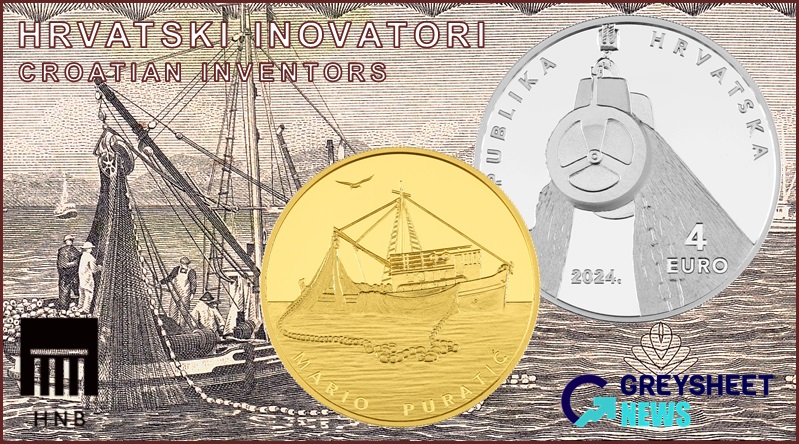






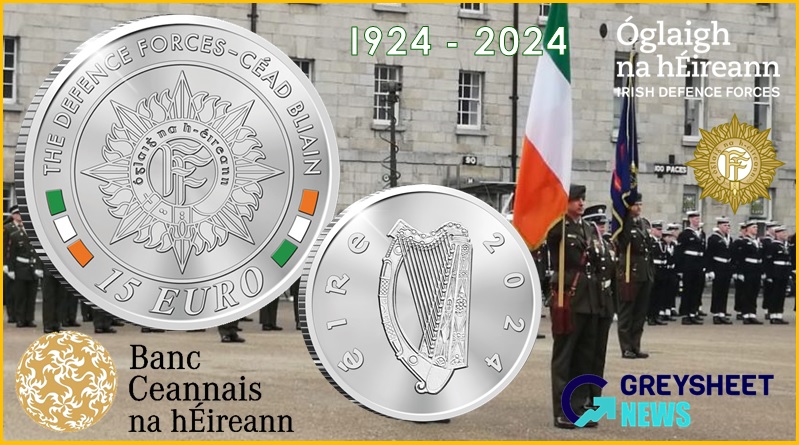
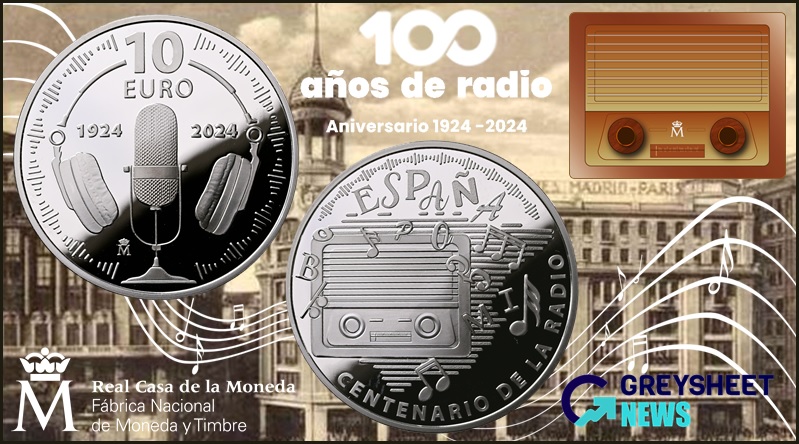

Please sign in or register to leave a comment.
Your identity will be restricted to first name/last initial, or a user ID you create.
Comment
Comments